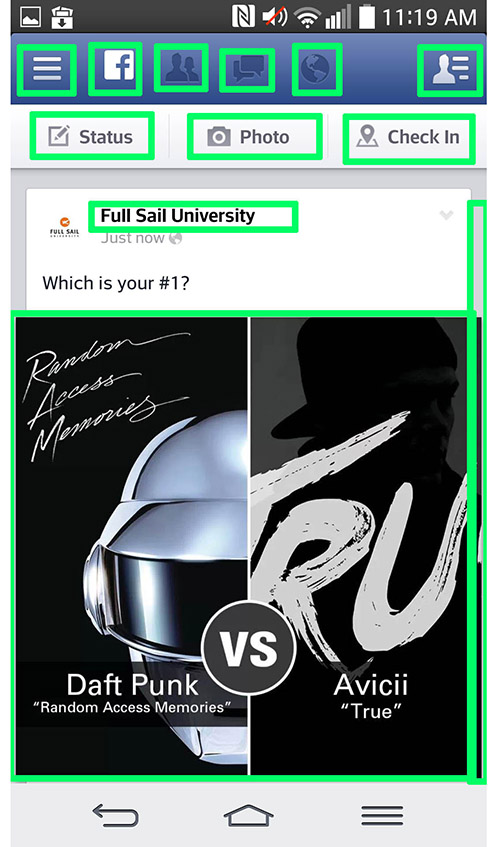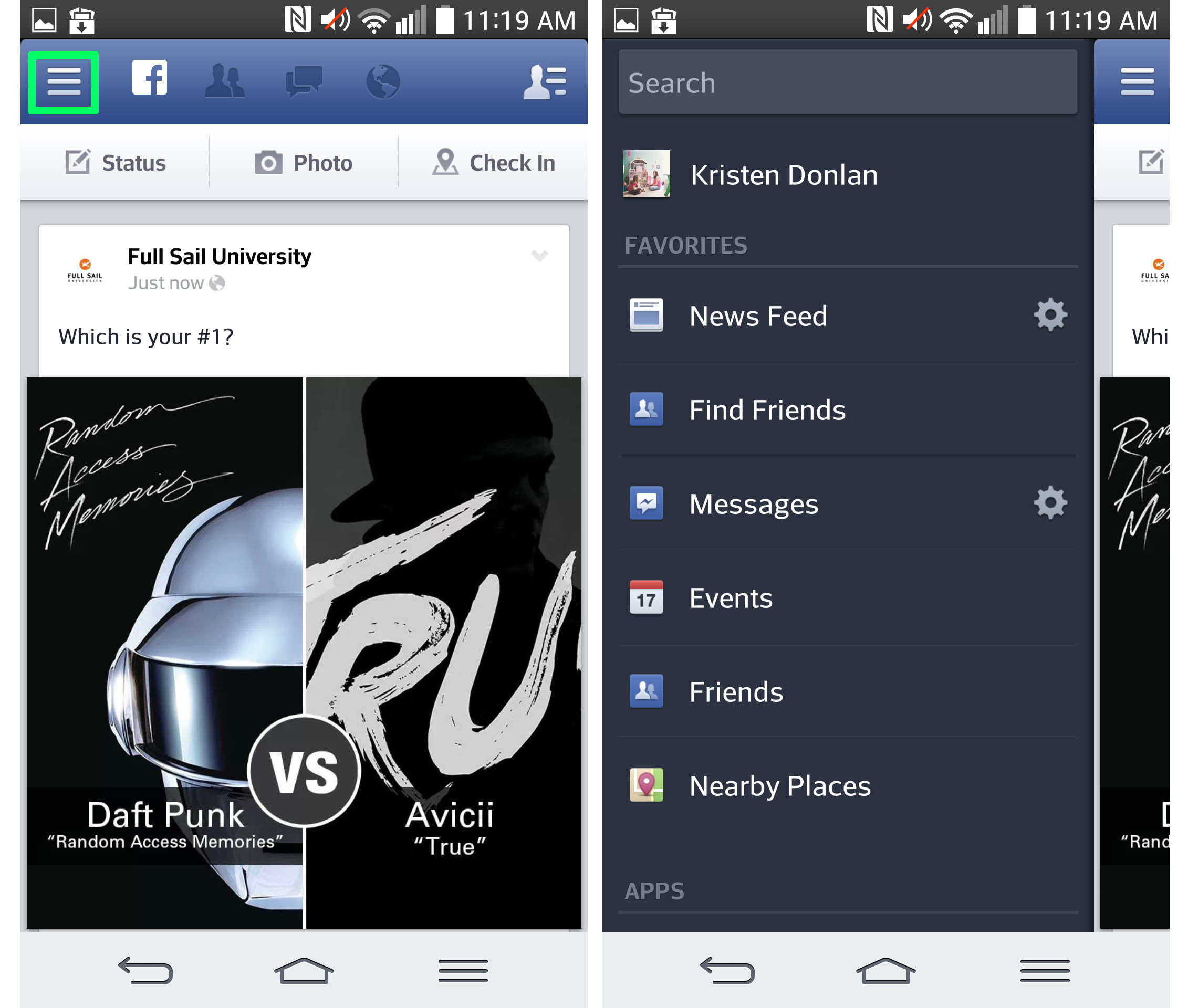Non-Linear Process
Previously, when creating and executing our processes we were analyzing a linear process. These were step-by-step, sequential processes where one thing has to happen for the next to occur.
Now we will be taking a look at nonlinear processes.
nonlinear:
2 Not sequential or straightforward: (Oxford Dictionary)
To recap: a linear process is a sequence of events that must happen in order. You can make decisions within that process, but those decisions must happen in sequential order to complete the process.
A nonlinear process is a series of actions and decisions that can occur in any order. A process is nonlinear if you are given decisions that can be chosen in any order (or skipped altogether) and will not affect the outcome of the overall process. It's important to note that a nonlinear process can, itself, be made up of both linear and nonlinear processes.
Let’s take a look at the Facebook app to deconstruct and better understand our process options.

Once inside the Facebook app we have our home screen, in this case, the News Feed. We’ve highlighted many of the choices the user has on this initial screen. The process now is nonlinear: the application is not restricted to one individual process to begin. It will have to execute the appropriate process depending on what the user decides, in the order the user decides.
Our top left slide drawer, or menu, is the first step in a series of new processes:

Pressing that slide drawer shifts new content over the screen and presents the user with a new set of options: a series of new processes. For example, we could choose to begin new nonlinear processes for "Find Friends" or "Messages". We could also choose to not execute any of these and instead to go back to our News Feed.
If we press this drawer again, the application slides our new content to the side and we’re taken back to our home screen.

We could choose to update our Status. "Status" is yet another non-linear process comprised of several linear processes. For example, depending upon the user's interaction - write post, tag friend/s, check in, add a photo, choose a mood or choose an audience within the "Status" process - the application will execute the appropriate process in the order we desire. Any one of these decisions can be chosen in any order within Status, but each individual decision requires a sequential order (or linear process) to complete.
For example Writing a post would entail:(Action) Type message in text field. (Action) Press "post" button.
This is a linear process for the "write post" process that must take place inside the greater non-linear "Status" process. We don't have to complete any other options, or we can choose to complete them in any order we desire, to successfully post a status update.
If we were to return back to our News Feed we could also choose to scroll down and “Share” the image.

The application would begin the nonlinear “Share” process, giving us another text field and a virtual keyboard. The processes here include, if desired by the user:
- Typing a message in the text field - (Action) Type message in text field. (Action) Press Share button.
- Choosing a different timeline to post.
- Choosing a specific audience.
As we can see, typing a message is one linear process that falls under the greater nonlinear "Share" process which also includes the above linear processes.
After looking at the above decisions under "Share", you may be asking why this is considered a non-linear process when these are decisions that could be diagrammed as we did in Week 3 in our linear processes. The answer lies in whether or not those decisions are required to be completed in a specific order to successfully complete the process.
For example, if the user were first prompted to type a message, and then prompted to choose a location, and finally prompted to change audience in order to complete the task, this would be considered a linear process, such as how we wrote our Week 1 processes. You were required to execute step-by-step to get your results. However, if our choices do not affect one another and can be made independently we are working with a nonlinear process and each option is the start of its own, stand-alone process.